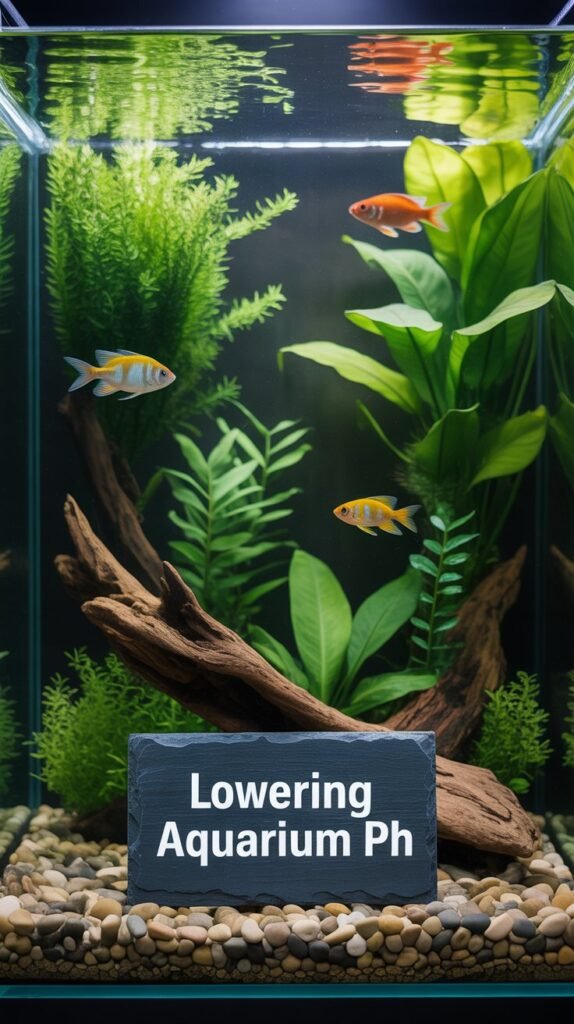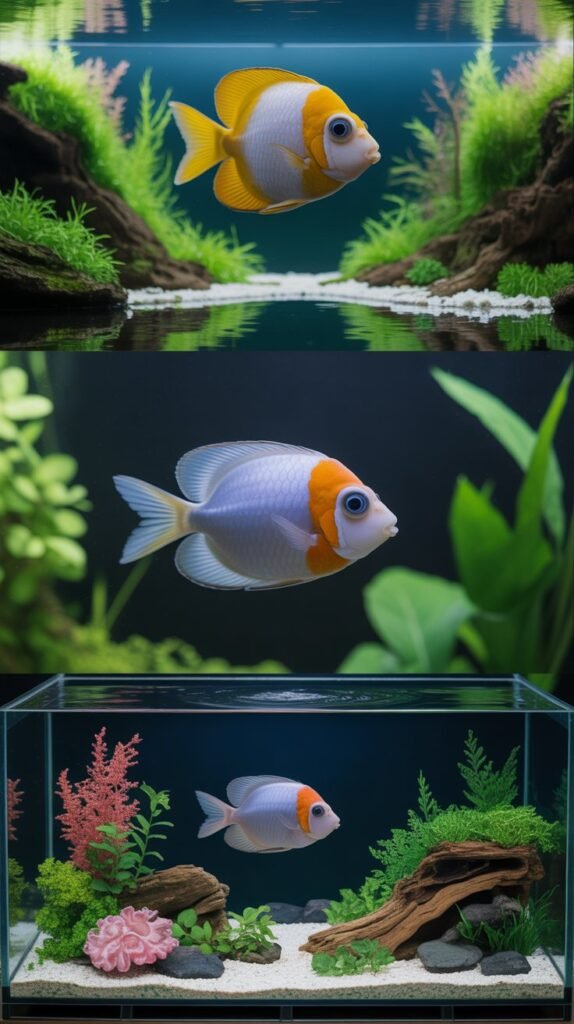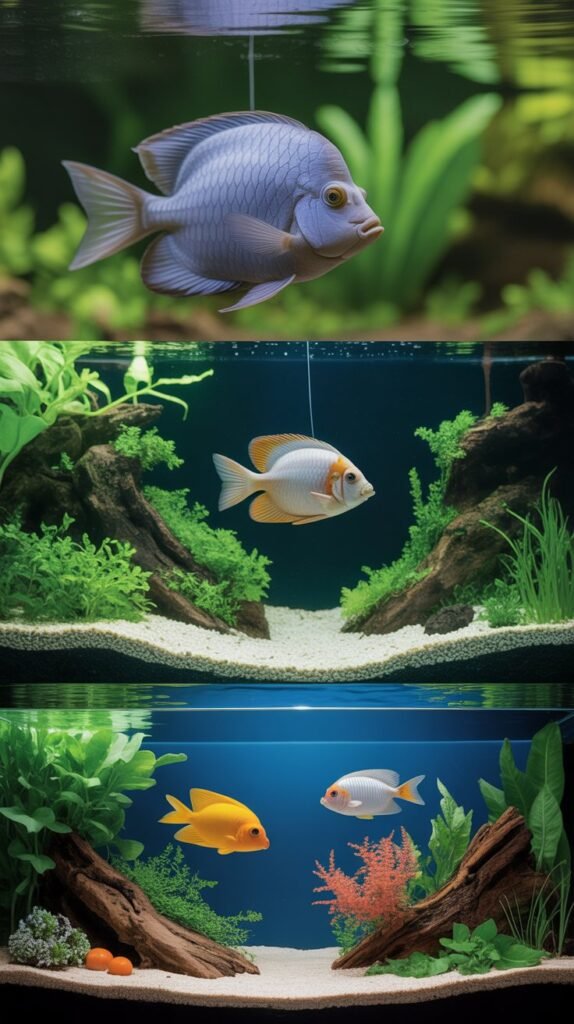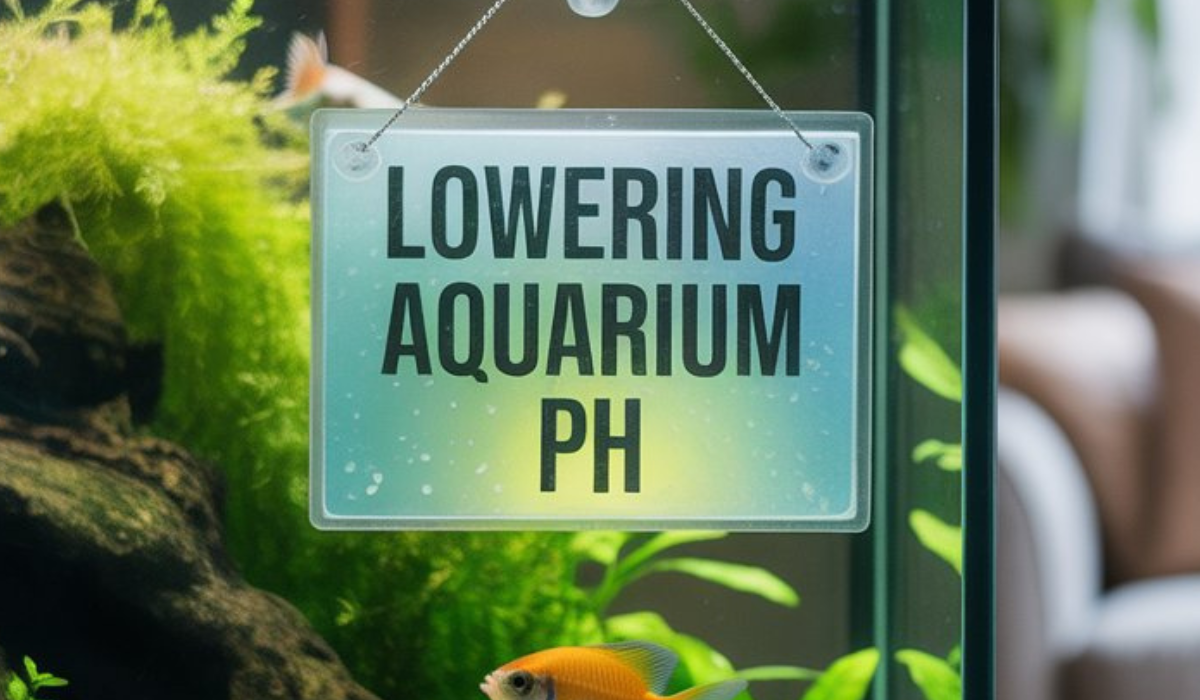Maintaining the right water chemistry is essential for the health and longevity of your aquarium’s inhabitants. One of the most critical factors in aquarium care is pH—a measure of how acidic or alkaline your water is. While many fish species adapt to a range of pH levels, certain aquatic environments require specific pH conditions to thrive.
If your aquarium’s pH is too high, it can lead to stress, illness, or even death in sensitive fish and plants. That’s why understanding how to safely lower aquarium pH is a key skill every aquarist should master.
In this comprehensive guide, we’ll explore the science behind aquarium pH, the causes of high pH, and the most effective natural and chemical methods for lowering it—while keeping your fish and plants safe.
What Is pH in an Aquarium?
The pH scale ranges from 0 to 14:
- pH 7 is neutral (pure water)
- Below 7 is acidic
- Above 7 is alkaline (basic)
Each step on the pH scale represents a tenfold difference in acidity or alkalinity. For example, a pH of 6 is ten times more acidic than a pH of 7.
In aquariums, the pH determines how fish and microorganisms interact with their environment. Stable pH promotes healthy biological activity, nutrient absorption, and stress-free living conditions.
Why Lower Aquarium pH?

Certain fish and plants naturally live in soft, acidic water, especially those from regions like the Amazon River or Southeast Asia. If your tank’s pH is too high (alkaline), it can cause:
- Fish stress due to unsuitable conditions
- Reduced breeding success in soft-water species
- Algae blooms, as some types thrive in alkaline conditions
- Ammonia toxicity, which increases at higher pH levels
By lowering your aquarium’s pH to match your species’ natural habitat, you create a more stable, healthy ecosystem.
Ideal pH Ranges for Common Aquarium Types
| Aquarium Type | Ideal pH Range |
|---|---|
| Community Tank | 6.8 – 7.4 |
| Amazon Biotope (Tetras, Angelfish, Discus) | 5.5 – 6.8 |
| African Cichlid Tank | 7.8 – 8.6 |
| Planted Aquarium | 6.5 – 7.2 |
| Shrimp Aquarium | 6.0 – 7.0 |
| Goldfish Aquarium | 7.0 – 7.5 |
If your pH is higher than recommended for your specific setup, lowering it gradually can help achieve optimal conditions.
Common Causes of High Aquarium pH
Before lowering your aquarium pH, it’s important to understand what’s causing it to rise. Some common reasons include:
1. Hard Tap Water
Many municipal water supplies contain high levels of dissolved minerals like calcium and magnesium, which raise pH and water hardness.
2. Alkaline Substrates or Decorations
Crushed coral, limestone, and certain rocks leach calcium carbonate, which increases pH over time.
3. Low Carbon Dioxide (CO₂) Levels
In planted aquariums, CO₂ naturally lowers pH. If CO₂ levels drop, pH may rise.
4. Overuse of Chemical Buffers
Excess pH buffers or water conditioners can overcorrect and push pH higher than intended.
5. Insufficient Organic Matter
Natural acids from decomposing plant material or driftwood help lower pH. Lack of these elements can make water more alkaline.
How to Test pH in Your Aquarium

Regular testing helps monitor stability. Here’s how to do it accurately:
- Use Aquarium Test Kits: Liquid reagent kits are more precise than test strips.
- Digital pH Meters: Ideal for advanced hobbyists who want accurate, repeatable results.
- Test Weekly: Check both your aquarium water and tap water to identify trends or causes of pH change.
- Measure at the Same Time Each Day: pH can fluctuate slightly due to photosynthesis and CO₂ variation.
How to Lower Aquarium pH Naturally
Natural methods are the safest and most stable ways to lower pH over time. They work gradually, reducing the risk of shocking your fish.
1. Add Driftwood
Driftwood releases tannic acids, which naturally lower pH while creating a soft-water environment similar to tropical rivers.
- Use Manzanita, Mopani, or Spider wood.
- Soak the wood before adding to remove excess tannins if you want to prevent water discoloration.
2. Use Indian Almond Leaves (Catappa Leaves)
Indian almond leaves release humic and tannic acids, gently acidifying water while providing antibacterial benefits.
- Add 1–2 large leaves per 20 gallons.
- Replace every few weeks as they decompose.
3. Peat Moss
Peat naturally lowers pH by binding minerals that cause alkalinity and releasing mild acids.
- Place it in a mesh bag inside your filter or directly in the substrate.
- It may tint the water slightly, creating a blackwater effect beneficial for species like bettas and tetras.
4. Add CO₂ Injection (for Planted Tanks)
Increased CO₂ levels lower pH and promote plant growth.
- Use a CO₂ diffuser or pressurized system for stable results.
- Monitor pH carefully to prevent excessive drops.
5. Mix with RO (Reverse Osmosis) Water
RO water is free of minerals, making it ideal for soft-water aquariums. Mixing it with tap water reduces alkalinity and stabilizes pH.
- Start with a 50:50 mix and adjust according to your readings.
6. Add Leaf Litter or Botanicals
Natural botanicals like oak leaves, banana leaves, and coconut husks mimic tropical habitats and gradually reduce pH.
7. Use a Lower pH Substrate
Soil-based or plant-friendly substrates (like ADA Amazonia or Fluval Stratum) naturally buffer water to a slightly acidic range.
How to Lower Aquarium pH with Chemicals
Chemical solutions can provide faster results but require careful control. Always follow product instructions and test water frequently.
1. Commercial pH-Lowering Solutions
Products labeled “pH Down” or “Acid Buffer” contain mild acids like phosphoric acid.
- Add slowly and measure after each dose.
- Avoid large or sudden pH changes (more than 0.2–0.3 per day).
2. Use Acid Buffers and Alkaline Buffers Together
In some cases, pairing acid buffer (to lower pH) with a neutral regulator helps maintain stable conditions.
3. Dilute with Distilled Water
If your local water is very hard, adding distilled water can help lower both hardness and pH safely.
Note: Always prioritize natural methods first. Chemical adjustments are best for short-term fixes or emergency situations.
How to Lower Aquarium pH Safely
Lowering pH too quickly can cause pH shock, which is dangerous for aquatic life. Follow these safety guidelines:
- Change Slowly: Reduce pH by no more than 0.2–0.3 points per 24 hours.
- Test Frequently: Monitor changes daily during adjustments.
- Avoid Overcorrection: Stop lowering once you reach your target range.
- Maintain Stability: Fish adapt better to a stable pH than one that fluctuates often.
- Use Aeration: Proper oxygenation prevents CO₂ buildup from making pH unstable.
The Role of KH (Carbonate Hardness) in pH Control

KH (carbonate hardness) measures the buffering capacity of your water—the ability to resist pH changes.
- High KH = Stable but harder to lower pH
- Low KH = Easier to lower pH but more prone to fluctuations
If your KH is above 8 dKH, it will be difficult to lower pH naturally. Using RO water or peat filtration helps reduce KH before adjusting pH.
Signs That Your Aquarium pH Is Too High
- Fish gasping or showing signs of stress
- Reduced appetite or lethargy
- Unexplained algae growth
- Cloudy water despite proper filtration
- Poor plant growth
Always confirm with a pH test before making adjustments, as symptoms can overlap with other issues like ammonia spikes.
Maintaining a Stable pH After Lowering
Achieving the right pH is only half the job—keeping it stable is the key to long-term success. Here’s how:
- Perform Regular Water Changes: Use dechlorinated or RO water matched to your tank’s parameters.
- Avoid Alkaline Additives: Don’t use crushed coral or shells in tanks needing low pH.
- Control Aeration and CO₂: Balance gas exchange to prevent pH swings.
- Feed Moderately: Excess waste increases ammonia, which affects pH.
- Keep a Consistent Routine: Test weekly and track results in a log.
Natural pH-Lowering Methods Comparison Table
| Method | Effectiveness | Speed | Best For | Notes |
|---|---|---|---|---|
| Driftwood | Moderate | Slow | All tanks | Releases tannins naturally |
| Indian Almond Leaves | Moderate | Medium | Betta, Tetra tanks | Adds blackwater effect |
| Peat Moss | High | Medium | Soft-water setups | May tint water |
| CO₂ Injection | High | Fast | Planted tanks | Requires monitoring |
| RO Water | Very High | Medium | Hard-water areas | Mix to balance minerals |
| Chemical pH Down | High | Fast | Emergency use | Risk of pH swings |
Top Tips for Beginners
- Always know your fish species’ preferred pH range before making changes.
- Use natural methods first for gradual adjustment.
- Never chase an “exact” number—stability matters more than precision.
- Keep a pH testing log to track patterns and stability.
- If your fish appear healthy and active, small deviations are usually harmless.
Common Mistakes to Avoid
- Making rapid pH changes
- Ignoring KH and hardness
- Using unsoaked driftwood or untreated peat
- Adding chemical pH reducers without testing
- Overloading the tank with organic material
Each mistake can lead to sudden shifts that stress or kill sensitive fish.
Species That Thrive in Lower pH Environments
If you’re planning a soft-water or acidic setup, consider these species:
- Tetras (Neon, Cardinal, Rummy-nose)
- Discus
- Apistogramma cichlids
- Betta fish
- Rasboras
- Angelfish
- Corydoras catfish
- Shrimp (Caridina species)
These species prefer acidic environments that mimic tropical rainforest waters.
Long-Term Benefits of Maintaining Correct pH
- Reduced stress and disease in fish
- Enhanced breeding and coloration
- Better plant growth and nutrient uptake
- Healthier biological filtration
- More stable and visually appealing aquarium
By maintaining proper pH balance, your aquarium becomes not only beautiful but also biologically balanced.
Conclusion
Lowering aquarium pH is a delicate but essential process for creating a thriving, natural aquatic environment. Whether you choose natural solutions like driftwood and almond leaves or controlled chemical adjustments, the key is patience and precision.
A stable, slightly acidic pH helps tropical fish, shrimp, and plants flourish while preventing common water chemistry issues. Always make changes gradually, test regularly, and aim for balance rather than perfection.
With the right approach, you’ll enjoy a healthy, harmonious aquarium ecosystem that mirrors the tranquil beauty of nature.
FAQs About Lowering Aquarium pH
1. What is the easiest way to lower aquarium pH naturally?
Using driftwood or Indian almond leaves is the easiest and safest natural way to lower pH gradually.
2. Can vinegar lower aquarium pH?
Yes, but it’s risky. Household vinegar can lower pH temporarily, but it’s unstable and can harm fish. Avoid it in established tanks.
3. How long does it take to lower aquarium pH naturally?
Natural methods may take 1–2 weeks to show noticeable results, depending on water hardness and buffering capacity.
4. Can I lower pH too much?
Yes. Rapid or excessive pH drops can cause pH shock, leading to stress or death. Always lower gradually and monitor closely.
5. Do water changes affect pH?
Yes, especially if your tap water has a different pH. Always match the pH of new water to your tank’s conditions.
6. Why does my pH keep rising after I lower it?
High KH (buffering capacity) or alkaline materials in your tank (like limestone) may be pushing the pH back up.
7. Should I lower pH for all fish?
No. Some species prefer alkaline water (like African cichlids). Always adjust pH according to your fish’s natural habitat.
8. Can plants help lower pH?
Yes, live plants absorb CO₂ during photosynthesis, which slightly acidifies the water.
9. Is it okay to use RO water for lowering pH?
Yes, RO water is ideal because it has low mineral content, making it easier to control pH precisely.
10. How often should I test pH after lowering it?
Test daily for the first week, then weekly once your pH stabilizes.

